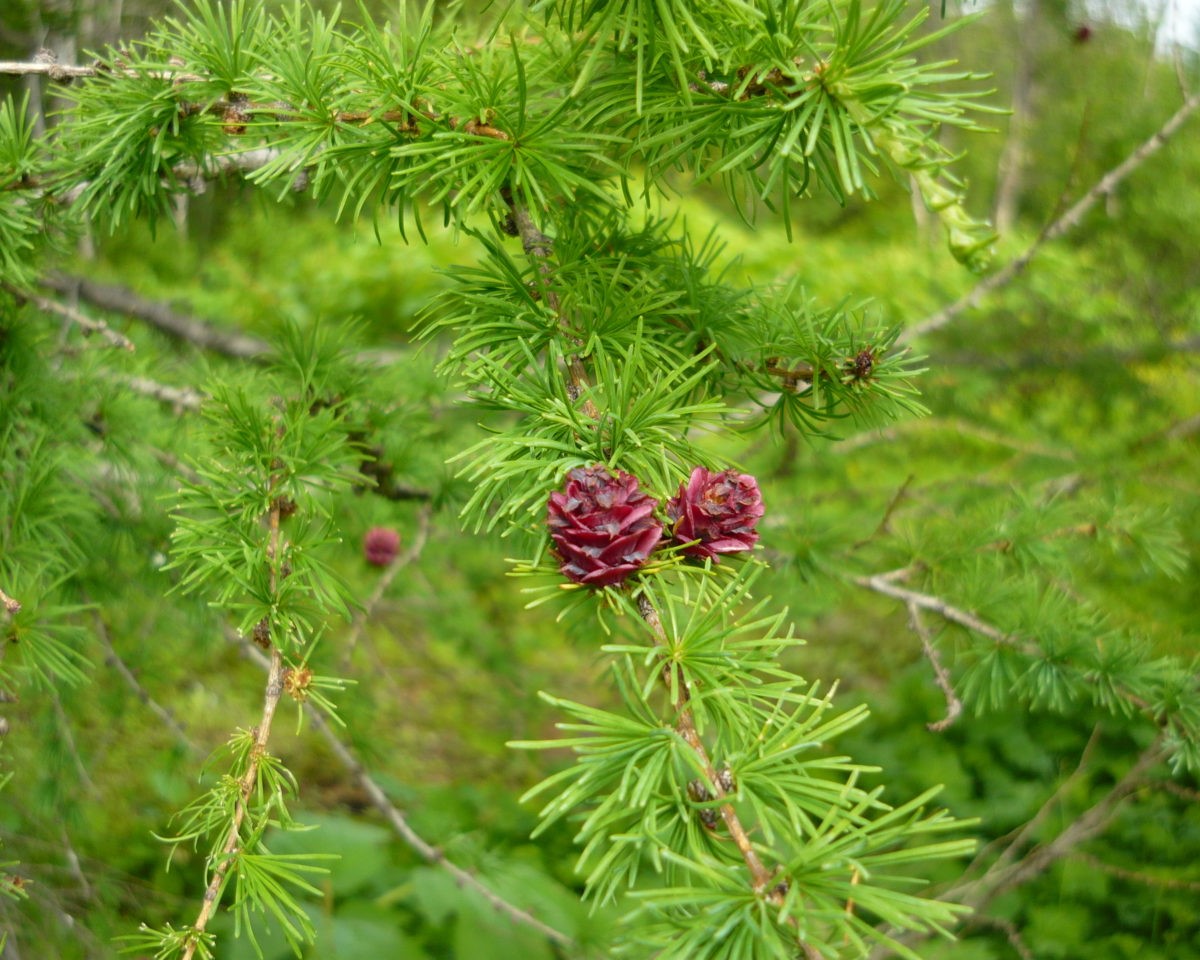PECULIARITIES OF THE MACRO- AND MICROELEMENT ACCUMULATION BY LARIX GMELINII NEEDLE IN THE IMPACT ZONE OF HYDROTHERMS
UDC 581.192: 674.032.475.354
Abstract
The aim of this study was to investigate the peculiarities of accumulation of 26 chemical elements in Gmelin larch needles (Larix gmelinii (Rupr.), Pinaceae) in the impact zone of Kuchiger hydrotherms (Barguzin depression, Buryat Republic, Russia). We found that the concentrations of Ba, Cr, La, Li, Na, Ni, Sr, Cd, and Sc in tree needles varied greatly across the surveyed area (coefficient of variation (CV) >50%). Strong levels of variation (CV=36–50%) were observed for K, V, Ce, and As; high levels (CV=26–35%) for Ca, Mn, Al, and Zn; medium levels (CV=16–25%) for S, P, Mg, Fe, Cu Co, Pb, Ti, low level (Cv<15%) for Y. A distinctive feature of L. gmelinii needles in the impact zone of hydrotherms is the increased content of Li (by 5.9–8.9 times) and Na (by 1.9–3.1 times) compared to the background. The intensity of biological absorption was characterized by the biological absorption factor (BAF). In the background territory, the highest coefficients were found for P and S (BAF = 30.6–80.1). Elements with strong accumulation are Ca, K, Mg, Mn, Sr, Zn, Cu, Cr, Ni, As, Cd (BAF = 1.4–9.9); while other elements were very poorly accumulated by plants (BAF = 0.03–0.9). Under the influence of hydrotherms, the intensity of chemical elements accumulation by trees has been changed. A linear dependence of the BAF on the temperature of thermal waters was established for Sr (r=0.92, P<0.05, n=15) and Cr, Ni (r=-0.85, P<0.05, n=15).
Downloads
Metrics
References
Fomichev Yu.P. i dr. Digidrokvertsetin i arabinogalaktan – prirodnyye bioregulyatory v zhiznedeyatel'nosti cheloveka i zhivotnykh, primeneniye v sel'skom khozyaystve i pishchevoy promyshlennosti. [Dihydroquercetin and arabinogalactan – natural bioregulators in human and animal life, application in agriculture and food industry]. Moscow, 2017, 702 p. (in Russ.).
Kolhir V.K., Bykov V.A., Baginskaja A.I., Sokolov S.Y., Glazova N.G., Leskova T.E., Sakovich G.S. Phytotherapy research, 1996, vol. 10, pp. 478–482.
Rastitel'nyye resursy Rossii: komponentnyy sostav i biologicheskaya aktivnost' rasteniy [Plant resources of Russia: component composition and biological activity of plants], ed. A.L. Budantsev. St. Petersburg; Moscow, 2016, vol. 7, 333 p. (in Russ.).
Telyat'yev V.V. Poleznyye rasteniya Tsentral'noy Sibiri. [Useful plants of Central Siberia]. Irkutsk, 1985, 384 p. (in Russ.).
Ligaa U., Davaasuren B., Ninjil N. Medicinal plants of Mongolia used in Western and Eastern medicine. Moscow, 2009, 378 p.
Vasil'yeva I.Ye., Shabanova Ye.V. Zhurnal analiticheskoy khimii, 2021, vol. 76, no. 2, pp. 99–123. DOI: 10.31857/S0044450221020146. (in Russ.).
Bityutskiy N.P. Mikroelementy vysshikh rasteniy. 2-ye izd. [Microelements of higher plants. 2nd ed.]. St. Petersburg, 2020, 368 p. (in Russ.).
Filenko R.A., Yurgenson G.A. Uchenyye zapiski ZabGGPU, 2011, no. 1 (36), pp. 209–213. (in Russ.).
Popova M.G. Doklady Rossiyskoy akademii sel'skokhozyaystvennykh nauk, 2015, no. 6, pp. 7–9. (in Russ.).
Makarov V.P., Borzenko S.V., Pomazkova N.V., Zhelibo T.V. Khimiya rastitel'nogo syr'ya, 2021, no. 2, pp. 191–200. DOI: 10.14258/jcprm.2021028832. (in Russ.).
Vilor N.V., Andrulaytis L.D., Zarubina O.V., Danilov B.S. Geokhimiya, 2015, no. 1, pp. 64–82. DOI: 10.7868/S0016752514110107. (in Russ.).
Solntseva N.P., Gol'dfarb I.L. Vestnik MGU, ser. Geografiya, 1994, no. 2, pp. 65–73. (in Russ.).
Zhambalova A.D. Zasolennyye pochvy zon razlomov Kuchigerskikh gidroterm i ikh geokhimicheskiye osobennosti: dis. … kand. biol. nauk. [aline soils of fault zones of the Kuchiger hydrotherms and their geochemical features: dis. ...cand. biol. Sci.]. Ulan-Ude, 2018, 238 p. (in Russ.).
Chernyavskiy M.K., Plyusnin A.M., Doroshkevich S.G., Budayev R.Ts. Geografiya i prirodnyye resursy, 2018, no. 2, pp. 63–72. DOI: 10.21782/GIPR0206-1619-2018-2(63-72). (in Russ.).
Ubugunov V.L., Ubugunova V.I., Rupyshev Yu.A., Khitrov N.B. Priroda Vnutrenney Azii, 2019, no. 3, pp. 37–54. DOI: 10.18101/2542-0623-2019-3-37-53. (in Russ.).
Perel'man A.I., Kasimov N.S. Geokhimiya landshafta. [Geochemistry of the landscape]. Moscow, 1999, 768 p. (in Russ.).
Mamayev S.A. Individual'naya i ekologo-geograficheskaya izmenchivost' rasteniy. [Individual and ecological-geographical variability of plants]. Sverdlovsk, 1975, pp. 3–14. (in Russ.).
Arsanova G.I. Redkiye shchelochi v termal'nykh vodakh vulkanicheskikh oblastey. [Rare alkalis in thermal waters of volcanic regions]. Novosibirsk, 1974, 111 p. (in Russ.).
Ayushina T.A. Priroda Vnutrenney Azii, 2019, no. 3(12), pp. 54–61. DOI: 10.18101/2542-0623-2019-3-54-61. (in Russ.).
Alekseyenko V.A., Alekseyenko A.V. Khimicheskiye elementy v geokhimicheskikh sistemakh. Klarki pochv seliteb-nykh landshaftov. [Chemical elements in geochemical systems. Clarks of soils of residential landscapes]. Rostov-on-Don, 2013, 380 p. (in Russ.).
Kasimov N.S., Vlasov D.V. Vestnik Moskovskogo universiteta. Ser. 5. Geografiya, 2015, no. 2, pp. 7–17. (in Russ.).

Copyright (c) 2024 chemistry of plant raw material

This work is licensed under a Creative Commons Attribution 4.0 International License.

This work is licensed under a Creative Commons Attribution 4.0 International License.
The authors, which are published in this journal, agree to the following conditions:
1. Authors retain the copyright to the work and transfer to the journal the right of the first publication along with the work, at the same time licensing it under the terms of the Creative Commons Attribution License, which allows others to distribute this work with the obligatory indication of the authorship of this work and a link to the original publication in this journal .
2. The authors retain the right to enter into separate, additional contractual agreements for the non-exclusive distribution of the version of the work published by this journal (for example, to place it in the university depository or to publish it in a book), with reference to the original publication in this journal.
3. Authors are allowed to post their work on the Internet (for example, in a university repository or on their personal website) before and during the review process of this journal, as this may lead to a productive discussion, as well as more links to this published work.











